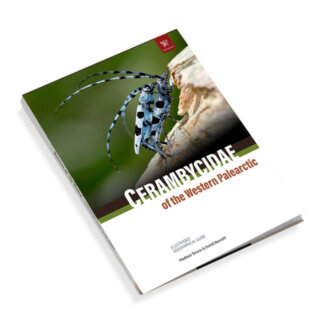Sites are selected so that they are affected as little as possible by sources of interfering radiation. This means as far as possible from sources of public lighting, illuminated houses, etc.
Sites of larger open spaces, clearings and forest paths are suitable.
Book novelties:
Prioninae of the World I.
Cerambycidae of the Western Paleartic I.
Books about Beetles
Unique pictorial atlases for identifying Beetles:
(2020) Tiger Beetles of the World, Cicindelidae, Illustrated guide to the genera
(2023) Tiger Beetles of Africa, Cicindelidae, Geographical guide to the family Cicindelidae
(2024) Tiger Beetles of Orient, Cicindelidae, Geographical guide to the family Cicindelidae
(2022) Ground Beetles of Africa, Afrotropical Region
(2022) Jewel Beetles of the World, Buprestidae, Illustrated guide to the Superfamily Buprestoidea
(2008) The Prionids of the World, Prioninae, Illustrated catalogue of the Beetles
(2010) The Prionids of the Neotropical region, Prioninae, Illustrated catalogue of the Beetles
Night Insects Collecting
Buy now. List of family Coleoptera
You can find here: Carabidae, Buprestidae, Cerambycidae, Cicindelidae, Scarabaeidae, Lucanidae, Chrysomelidae, Curculionidae, Staphylinidae
Choice of hunting time and place
Night Insects Collecting
Sites are selected so that they are affected as little as possible by sources of interfering radiation. This means as far as possible from sources of public lighting, illuminated houses, etc.
Sites of larger open spaces, clearings and forest paths are suitable.
The conditions are also greatly impaired by moonlight. Therefore, ideally choose a time outside the full moon.
We start hunting just after dark and continue until dawn.
In the temperate zone, catches are greatest on warm nights above 20 °C.
In the tropics, this principle does not fully apply and insects are active even at lower temperatures.
In each phenological period, there is a different number of insects in the ecosystems, which are in a different developmental state. Therefore, we find different insect species in a given phenological phase.
In temperate zones, for example, butterflies are only found for a limited time of the year.
In tropical areas, on the other hand, the occurrence of insects is directly linked to the rainy season.
Therefore, it is necessary to know the bionomics of the species we choose to study/hunt. Night Insects Collecting
Night Insects Collecting
Lighting sources
The choice of a suitable light source also greatly influences the quantity and species composition of insects.
The UV component is the most important here. Therefore, we select light sources with the highest possible UV component.
It is important to choose locations that are relatively bright so that the radiation is visible as far away.
Therefore, it is also important to select the appropriate light output with regard to the spectrum of light radiation.
Great care must be taken when working with electrical voltages. All leads and equipment should be protected from moisture and rain.
Techniques for collecting insects – Where to look for insects – Protection of insects – Formation of youth


